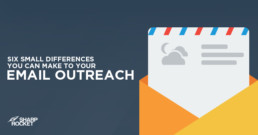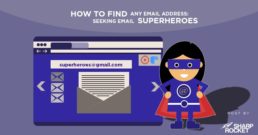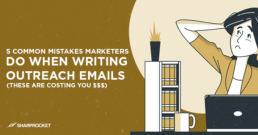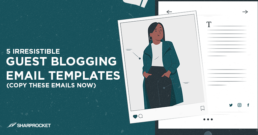Six Small Differences You Can Make to Your Email Outreach
Outreach is an effective way to form relationships with people who haven't known/seen your brand, and are likely be interested to get more eyeballs to your content - either through contextual linking or social sharing.
It's easy to look up successful case studies in acquiring links and getting more traffic through email outreach. The step-by-step process is mostly indicated, but those little changes one can make to turn a mediocre outreach email into a solid placement of links are sometimes ignored.
So, let's take a look at some details that will improve the probability of getting the links you desire.
Table of Contents
1. Validate Emails Scalably
Whether you've done large-scale campaigns or a one-time off outreach campaign, you always come across bounced emails.
These are email addresses that are either non-existent or maybe the receiving email server is temporarily unavailable, overloaded, or it couldn't be found.
In general, you don't have control over these bounced emails - but you can avoid receiving them by doing either of these two things:
- Check the validity of the email upfront.
- Find another email address that can be your second contact in case the first one bounces.
For the first solution, there are web-based tools that can aid you with validating emails - mailtester.com, and email-checker.net.
Doing so to each of your hundreds or thousands of emails can consume much of your time.
Instead, you can use Email Verification Tool to scale the validation of email addresses. This Google Sheet add-on below is easy to set up and automatically checks the email deliverability of emails.
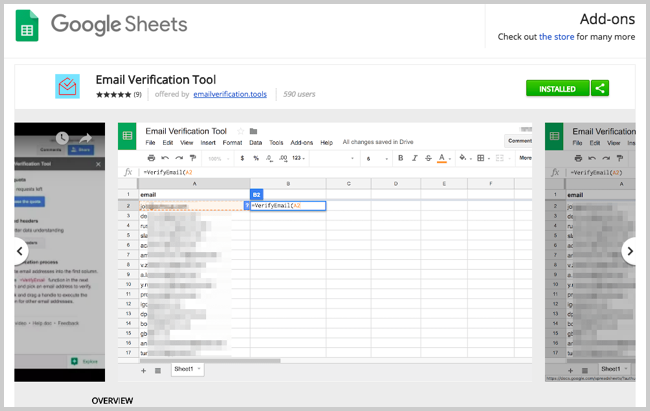
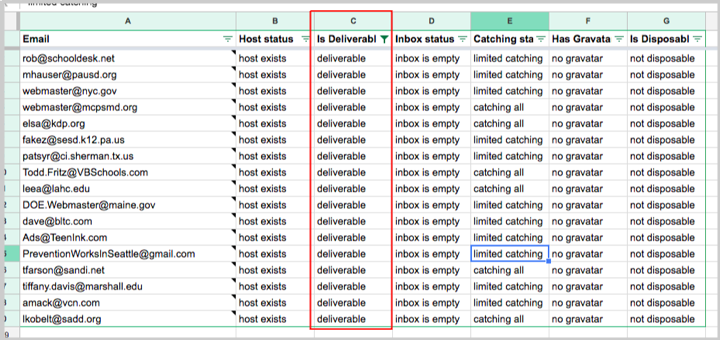
When emails are undeliverable, there are two options you can choose from:
- Find other ways to connect to your outreach prospect either through Twitter or Linkedin.
- Look for the next available contact person (editor, librarian, webmaster, etc..)
By scaling emails' validity upfront, it'll help you go for the next methods to connect to your link prospect. Not doing so is a waste of link opportunities you've developed for one specific website.
2. Ask "Who To Contact" For A Specific Page
When you're sending outreach emails, chances are the people you're reaching out to aren't the first-hand persons who handle the desired page you're trying to acquire a link from.
For those who know which person or department handles that single page and have been kind to send you the right contact person and his/her email address, you compose a new email, forward your original message, and send it to the new contact person.
That may not be always the case. Sometimes the thread of conversation gets longer until you found out he is not the right person to connect with for your link request pitch.
That said, one tip for you to add changes to your initial email is to ask who is the right person to contact.

You'll be surprised because they can helpfully give you the exact name along with his/her email address.
No back and forth emails. Less waste of time you can instead spend talking to the right outreach person.
3. Give Context In Your Emails
It's easy to copy and paste email outreach templates. But when you get replies like, "Which one?" or "what are you referring to?,” it's another lazy approach to send another canned response to get the link immediately (and hopefully proceed to another email conversation).
Without your contact person getting the right understanding of your outreach email, it'll be difficult for him to take any actions on your part.
One principle to consider is to always give the right context in your emails.
For example, if you've had the exact target page, it'll be better to include the Page Title of the resource page in your first email - providing your outreach prospect with the right context of your pitch.
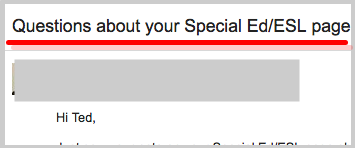
Relevance is crucially important in outreach. But when the context is misunderstood and/or not shown in pitches, it'd likely reduce your outreach placement rate.
4. Track Significant Rejections
Not all outreach campaigns succeed. For certain reasons, the link placements for target sites are not achieved - which lowers the conversion rate of the overall campaign.
Link building, in reality, is a hit-or-miss activity. Those misses particularly in outreach should be identified in order to make necessary steps, either to turn those rejections into link placements or better off use those rejections to make adjustments in one area of a link development campaign.
I'm a big fan of Stephen Covey's principle of "Circle of Concern" and "Circle of Control".
Basically, it shows two circles of choices that cover all the things in our life over which can just be concerned about or we can control of. These circles are called, "circle of concern" and "circle of control".
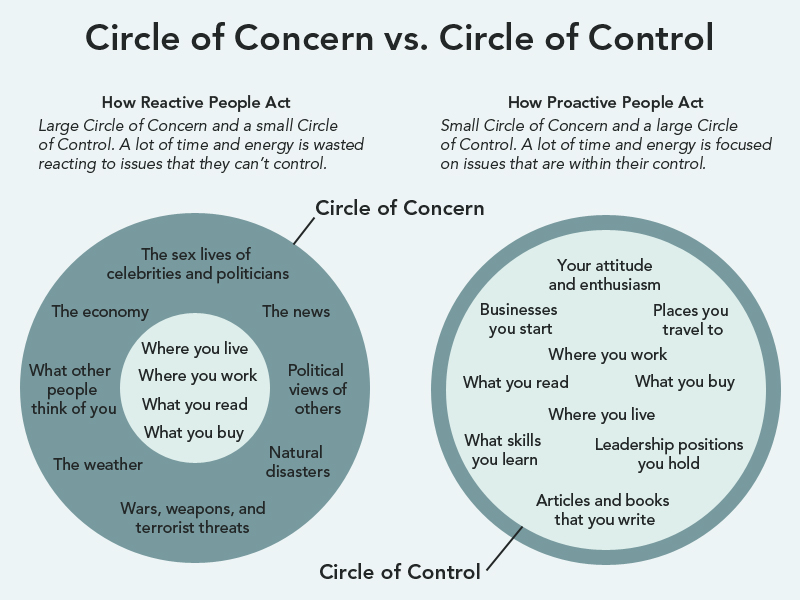
Applying that to outreach, we'll be able to identify which rejections in emails we have control over (make adjustments if we can) or simply a concern (have to move on quickly).
Here are some examples of rejections in outreach and guess which ones you have control over —make adjustments with your content/outreach/prospecting) or a concern that can be considered as a loss or reality of the campaign.
- The webmaster you're contacting is planning a website redesign (and may temporarily not be able to add any new external links).
- The daily schedule of the webmaster/link curator is tight and couldn't do you a favor of adding the link.
- The content being pitched to is topically irrelevant to the target page/website.
- The page where content is hosted can't be accessed or is displayed as an error.
There are a lot more examples I haven't included here, but the point of bringing this up is to track rejections that are only significant for changes or improvements in your content - through developing its format, user experience, and other factors that can affect users' trust. There may possibly be some necessary adjustments in your email's subject line and email copy used overall, which can hugely impact how your message will be perceived by the webmaster.
5. Value Time Of Contact Persons By Showing The Value Of Your Pitch
Giving descriptions that your content is "amazing," "comprehensive," "ultimate," or "complete" (even if it's not) while not showing why it can be described as such takes more seconds of reading your email than it actually should've provided value to your contact person.
Here are some tips to intelligently describe your content in email pitches:
- Let them know the format of your content piece. While this can be added straight to the subject line, it'll be more emphasized if it's repeated on the email body.
- Give one or two-liner points of the utility and comprehensiveness of your content, particularly if you're targeting resource pages where they've linked to similar pieces.
- Show actual social proof of the content - whose influencers and/or major local/niche media sites, for digital PR campaigns, the contact person may be familiar with that have linked to or mentioned your content asset.
Value the time your contact person will spend reading your email. By giving him enough reason to check out your content, you'll have more chances of acquiring editorial links from his publication.
6. Follow-Up With Another Email Format
Sending follow-up emails to non-respondent prospects is one fundamental activity in outreach. There are other reasons why it is a must-do besides getting a response from someone who hasn't read it.
- Take another chance with a non-respondent contact person who've read and seen the value of your pitch but hasn't taken any action yet (the follow-up email can re-confirm the decision and push the action further).
- Knowing the best times and seasons to connect again for people saying "can you get back to me during summer or start of the school year?". A follow-up email gives you a clue of their best moments to reach out to (make sure you take a note of this in your spreadsheet).
- Organize fairly your email contacts by changing relationship stages from In Communication to Not Interested those who are not really interested in your pitch - which saves a lot of your time sending them another email either from the same website/project or of another one.
There are two ways to approach follow-ups: sweet and short follow-up email or a follow-up that tells three options that they can choose from.
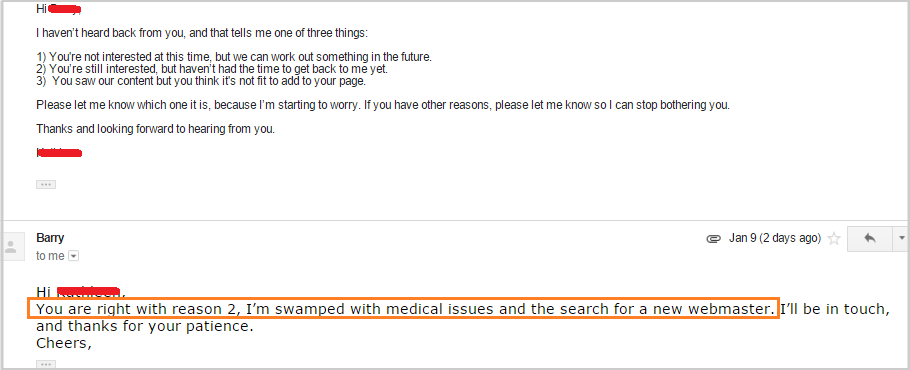
Don't be lazy in sending follow-ups given there may be missed link opportunities you should've probably gotten if you skip on them.
One recommended practice is to create your own email experiments for your initial and follow-up email templates: A/B testing subject lines, email body, email sender, and any email fragments that are worth testing.
It is best to both have a bandwidth to do what already works (email outreach best practices) and have enough left for trial and errors in email experiments.
Need help with link building? Check out our link building services.
How to Find Any Email Address: Seeking Email Superheroes
Link building is not complete without emails. In order for us to build relationships with other bloggers, we must have a venue to connect with them.
And one best thing to bring together bloggers is through email outreach. It is when you contact the bloggers you have prospected to gain exposure for you or your client’s products and services.
But before you proceed to outreach, you first need to look for the email of the person you are trying to connect to. The more specific it is, the better.
How To Find Email Addresses?
1. Check the contact page.
This is where they’ll most likely be adding all ways to connect with them, like their social media pages, contact form, or email address.
Do note that contact forms are not always advisable because it has a lower chance of response rate than when you reach out directly using an email of a specific person.
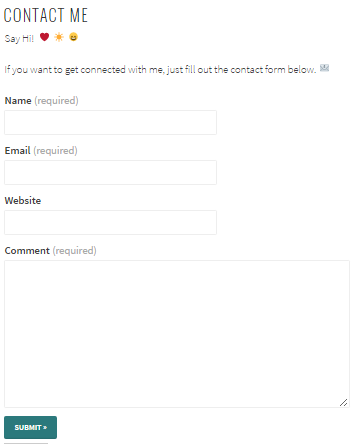

2. See about page.
Many website owners take their emails as part of their identity. That is why we can sometimes see emails on the about page. Some like their contacts put on a different page especially if they use contact forms.
Others prefer it to be included in their about page.
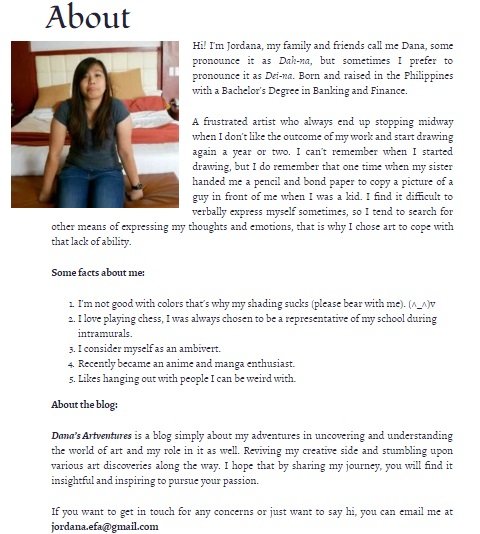

3. Visit privacy policy.
All the boring legal stuff aside, some bloggers include their email addresses on their privacy policy page for readers or other people who wish to email them regarding their queries about the security of their personally identifiable information given to the website.
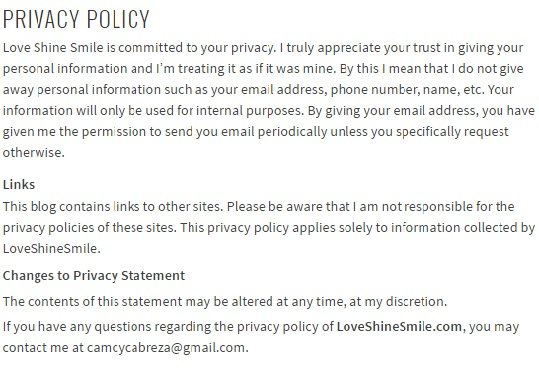

4. See disclaimer or disclosure page.
You can also try to look in their disclaimer or disclosure page where they state that the information readers have seen in this blog are meant to be taken as an opinion to avoid lawsuits or that they receive compensation from companies they advertise.
There are instances where they add their personal email for it to be easily seen for people who wish to reach them regarding their queries.
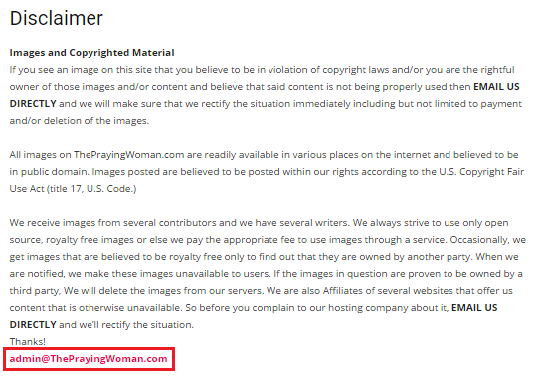

5. Go to social media pages.
Just check the social media accounts of the blogger and click on the about page. Voila! You will then find the email address you are looking for.
A. Facebook
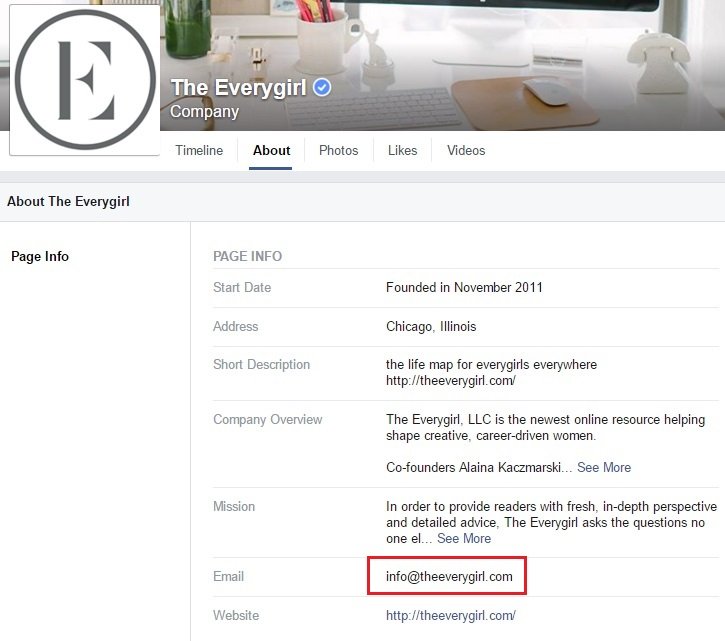

B. Google+
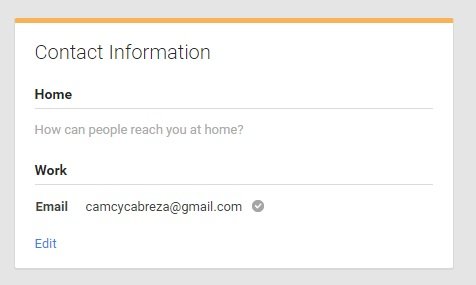

C. Twitter
All My Tweets is a handy tool you can use on Twitter to find all the tweets an individual has made. You can even opt to hide replies and retweets.
You just have to sign in with your Twitter account and you’re good to go! With this, you can also try to look for your prospect’s email because at some point there is a great chance that he tweeted something with their email address on it.
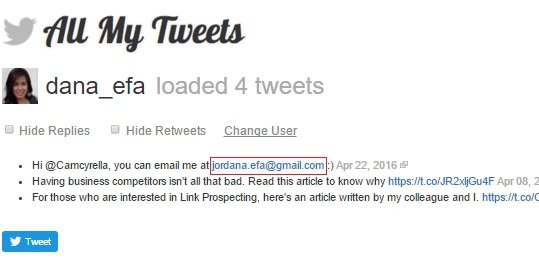

Here are the steps to start using this tool:
- Go to https://www.allmytweets.net/connect/ and sign in with your Twitter account.
- Type in the Twitter account of the person you are trying to search.
- A result of all his tweets will be shown. You can then use CTRL + F or COMMAND + F (if you’re using a Mac Laptop) to search for the word “email” faster than going through all his tweets one by one.
- Just skim through the tweets that mentioned “email” and if you’re lucky, you will find an email that your prospect tweeted.
6. Utilize Google Search Queries.
Google can be quite dandy in doing detective work for you. We can play around with Google search by combining search operators and add-ons to get a more specific result. Let me cite some examples:
name + “email” OR “contact”
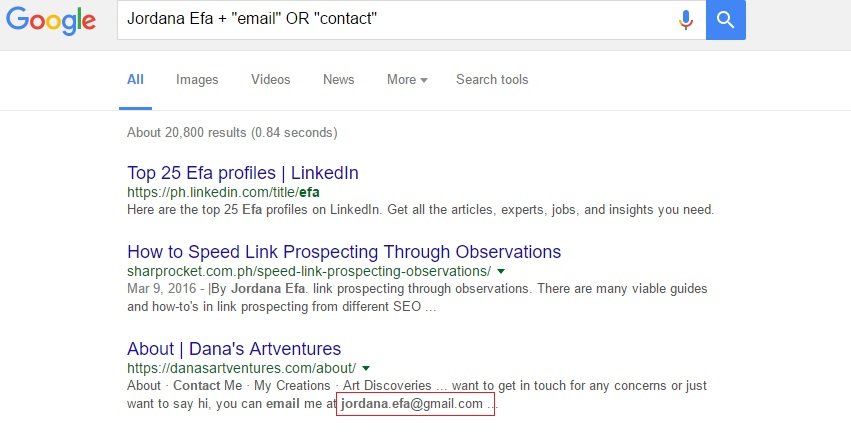

site:[domain.suffix] + “email” OR “contact”
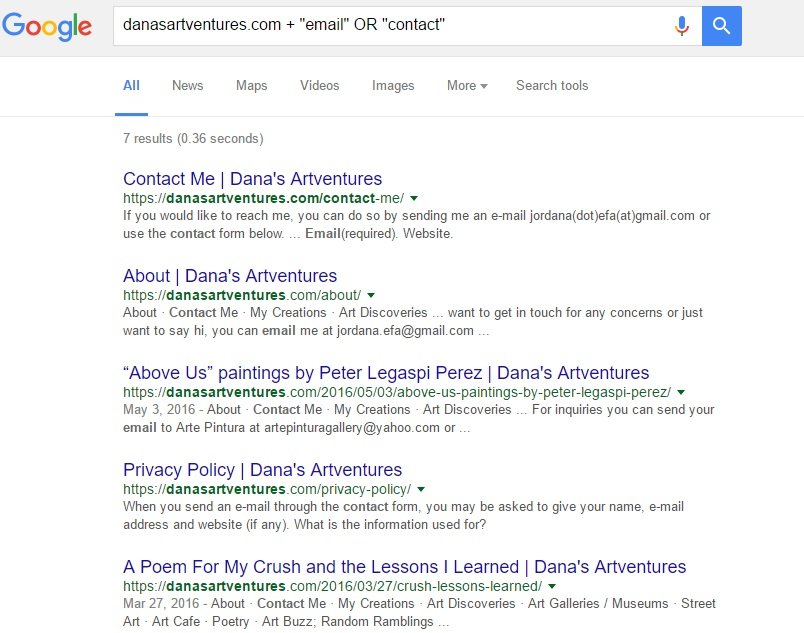

domain.suffix + name + email
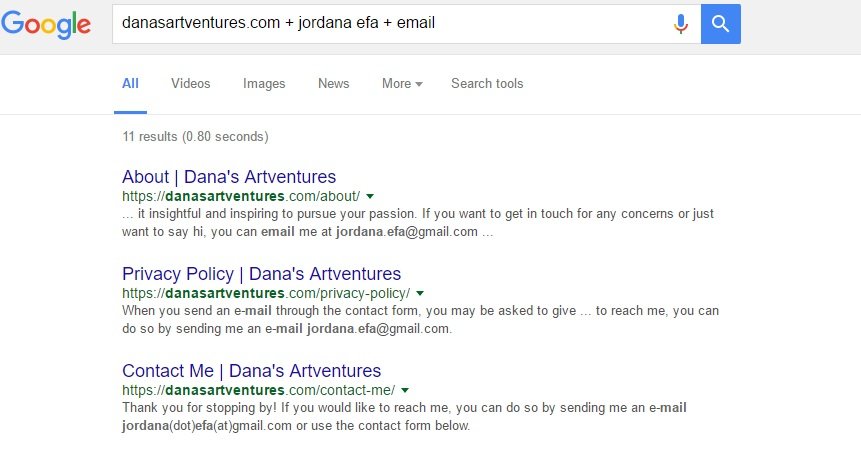

domain.suffix + name[at]domain.suffix
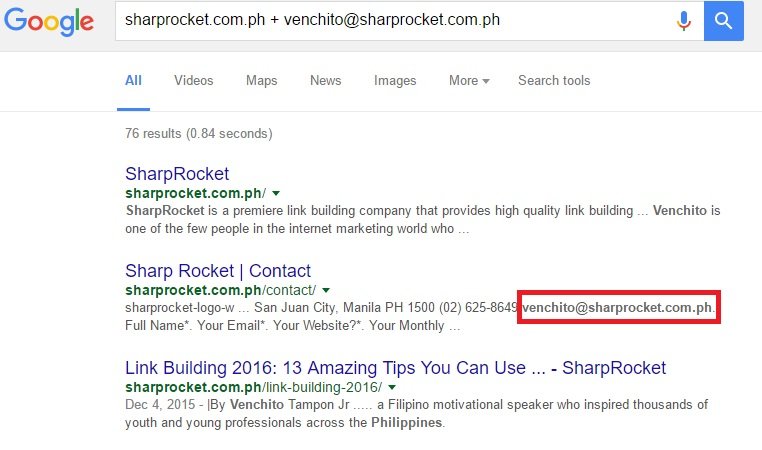

7. Use Hunter
If you want to save time and find email addresses in seconds, Email Hunter is a magnificent link building tool to instantly find email addresses within the website itself just by clicking on its icon Google extension.
There is a catch though.
Request for email through this tool is only up to 150 each month unless you upgrade to their premium account.
If you want to use this tool, all you have to do is to create a free account then download its Google Chrome extension.
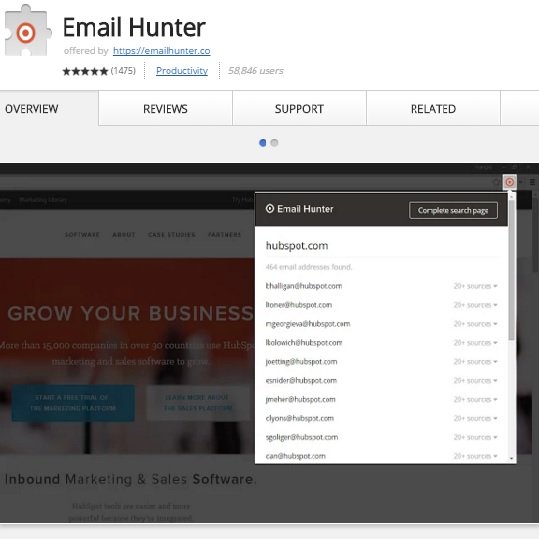

Though Email Hunter is convenient to find email addresses FAST, it becomes irrelevant when some bloggers tend to be more creative in publishing their contact information.
Some bloggers may publish their email addresses in image format.
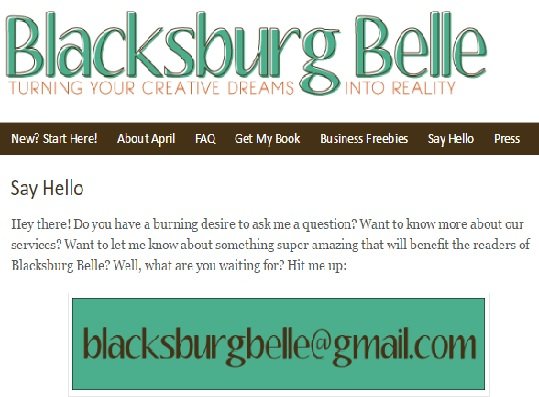

Some may try to emphasize the @ and change it to [at] or the period and replace it with [dot].
![email with [at] or [dot]](https://sharprocket.com.ph/wp-content/uploads/2016/05/email-with-at-or-dot.jpg)
![email with [at] or [dot]](https://sharprocket.com.ph/wp-content/uploads/2016/05/email-with-at-or-dot.jpg)
Note: Unless the correct email format is hyperlinked on these creative formatting, the blogger’s email address will remain hidden from Email Hunter.
8. Try Clearbit


Clearbit is another great tool to look for emails of a specific domain.
First, you have to install the chrome extension. Using your Gmail account, click “Connect”.
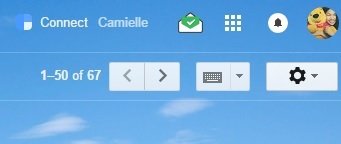

Type in the name of the company or domain you are looking for then press Enter.
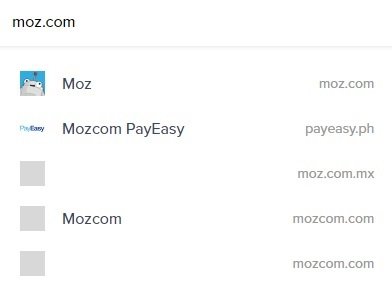

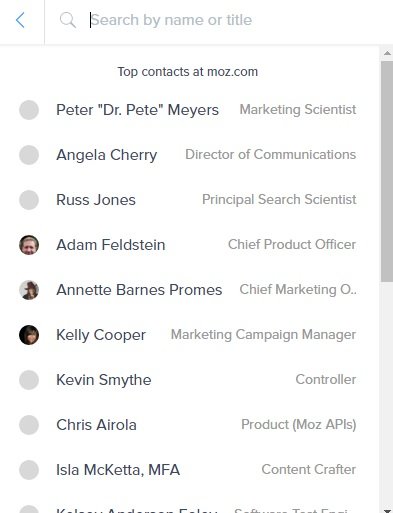

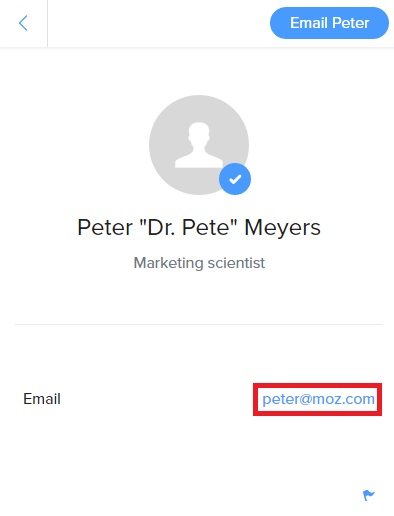

Note: Not all domains you will key in will give you results. However, there’s no harm in trying.
9. Try FindThat.Email
This tool is very handy for those who are looking for the email addresses of company owners/staff.
Head over to findthat.email.
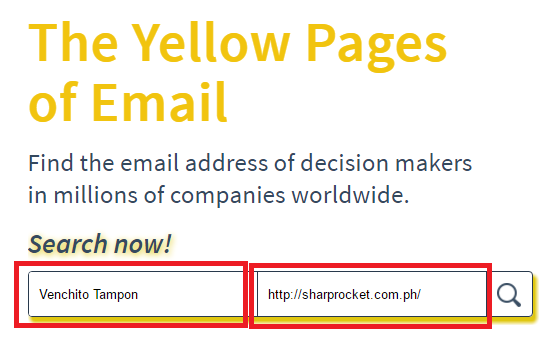

Type in the full name of the person.
Copy and paste the domain of the website.
Click the search button.


How To Verify Email Address?
Why validate emails you say? There are cases where the email addresses that bloggers provide are no longer valid or are inactive. Through email verification, you can then authenticate that the email address to which you are going to send your message is a valid email. You, therefore, minimize failed messages and improve your email deliverability and the chances of it being seen.
1. Utilize Rapportive
Rapportive is also a Google Chrome extension that gives you results of everything you need to know about the person you are trying to contact pulled from their LinkedIn information.
You can try to use this to validate an email to know if it exists.
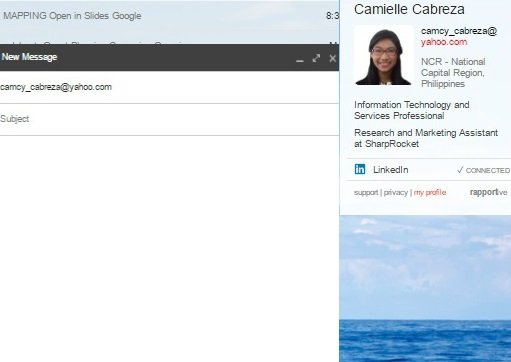

To use this plugin:
- First, you have to download Rapportive.
- Compose an email using your Gmail account.
- Key in the email address you found or the potential combination of email addresses using the blogger's name and domain name until a photo appears along with your prospect’s LinkedIn information.
Note: You have to sign in with your own Gmail and LinkedIn account to be able to use this plugin.
2. Use VerifyEmailAddress.org
What if they don’t have a LinkedIn account connected to their email? That’s not a problem! VerifyEmailAddress.org is another way to verify the email address of an individual, even without the connection of social media profiles to their emails.
What you have to do is simply go to verifyemailaddress.org and key in the potential email address you have created in mind to see if it is valid.
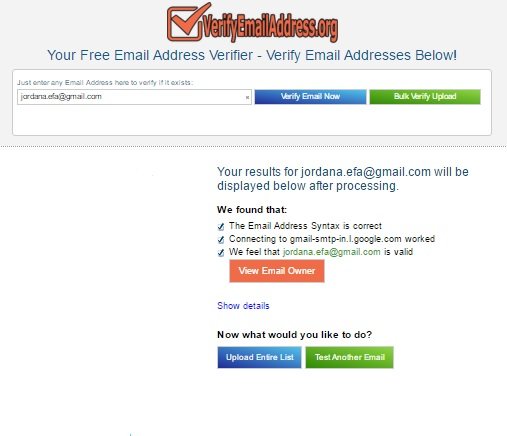

Meeting Bruce Wayne Not Batman: Getting Personal
You wouldn’t say you know Batman if you didn’t see him behind his mask. In searching for emails, it is very important to catch the more specific email rather than the generic ones. Most bloggers use their name or initials plus their blog or domain name.
Just be experimental in combining the blogger’s name, domain name, and punctuation marks such as dot or underscore. The key to finding valid emails easily is by searching in obvious places first and verifying them through third-party tools. This will be a great help especially in checking bulk email addresses.
Have We Been Helpful?
Want to take your link building to the next level – — but don’t know where to start, and are feeling overwhelmed by this post.
We are here to help you. SharpRocket is a team of link building specialists who love building high-quality links.
To learn more about how we can help, take a look at the link building services we offer and results we got for our clients.
4 Easy eCommerce Link Building Tips for Product Pages (Increase Rankings To Your Money Pages)
TRANSCRIPT:
4 easy eCommerce link building tips for product pages
In this episode, you’ll discover these simple tips to help you build quality backlinks to product pages.
Because let’s face it, it’s not that easy to build links to a sales page like product pages. Publishers and potential linkers won’t dare to link to a sales page unless there is a value attached to it.
Stay tuned because, at the end of this episode, you’ll have a solid strategy to continuously get links to your eCommerce sales page.
I know, I know it’s not that easy to build backlinks to your sales page.
But pause for a while. Because there’s a way to do that. So let’s go and dive in straight to these 4 easy eCommerce link building tips.
Table of Contents
How to Build Backlinks to eCommerce Product Pages
1. Maximize where to buy pages as your lowest hanging fruits.
If you’re looking to increase visibility to your eCommerce money pages, start with the lowest hanging fruits - pages that have visitors likely to convert into customers.
People landing on these pages are likely to buy offerings, whether that’s the product or service. So if in any case, you get a backlink from one of these where to buy pages, you get the chance of earning potential customers.
Now the question is, where are these where to buy pages?
Specifically, you can find them using search queries like “where to buy” on Google. So you type in “where to buy” then “your product”. You’ll be able to see partners of your online store, for example, retailers selling your products that have their own websites.
Now it’s easy to reach out to them, as you already have an instant connection - the product itself. And it’s not a typical cold outreach, where you have to fake your outreach email, all you have to do is to say you’d want to be included on their page, as you are selling the product or maybe the owner of it - whichever status you’re in right now.
You can use SEO Booster to optimize some of your product pages.
2. Add pricing guides to your product or category pages.
The way to get more backlinks to your product pages and increase their rankings, later on, is to add any linkable content to the page. This means that there must be something in your content that can be referenced by publishers.
One of which is adding any pricing guide. If you can cite the pricing information of your product, there is a likelihood of backlink opportunities awaiting you.
With consumers today, it’s on their top of mind to see pricing. No matter where they are in the buying cycle, they want information about pricing. So if you can add any information customers contextualize or convey the parameters - that have a direct impact to cost is a good linkable content you can add to your sales page.
3. Insert graphics to your sales page.
If created right, visual content can be linkable. And is a good opportunity to make your sales page more appealing to potential linkers.
Could your sales pages benefit from some graphics? Are there any images, videos, widgets, or downloadables that you can add to your product or sales page?
How about any case studies or sales pdf?
Because these are the visual elements helping your customers to make proper buying decisions, but also help you get backlinks from bloggers and publishers who can use your visual content for their own content.
4. Be a storyteller.
And what I mean by being a storyteller is to find an origin story of your product or service.
Talk with the designers, manufacturers, artists, or whoever creator who actually helped design or perfect the product or service.
The origin story can be a citable element to your sales page -- meaning it helps people know more about the product or service. And who doesn’t want stories, right?
Inspiring your target audience is a great strategy to get more backlinks naturally.
By giving third-party writers and content creators a reason to link to you - in this case, an origin story about your product or service, there is no impossibility to link to your eCommerce product page.
So there you go, you discovered 4 easy eCommerce link building tips for product pages that can help you increase your rankings targeting product keywords.
Before you go, I have a special gift for you. if you’re looking for ways to build backlinks to your online store or you’re stuck as to what link building strategy to use for your website, simply go to the description of this podcast episode.
Go to either of the two resources I shared there. One resource is a blueprint that I and my team have used to scale ink building for clients and another resource for link building opportunities in the eCommerce space. Go and grab those resources so that you won’t have to worry about how to do link building for your website.
For more link building and content marketing tips, be sure to subscribe to this podcast to get notified of the latest episodes. Just click the “Follow” button. See you in our next episode.
5 Quick And Easy Outreach Tips To Increase Your Conversions
7 quick and easy outreach tips to increase your conversions
In this episode, you’ll discover easy techniques that you can apply to your outreach campaigns, so simple and common sense, yet other marketers don’t practice them well in their pitches.
At the end of this episode, you’ll realize the basic rules in outreach often unwritten, because too many marketers are focused on the next big thing without realizing that the fundamentals make a good headstart and big difference.
Table of Contents
The first in this list of outreach tips is to:
Choose your word intent
What most marketers fail at when writing email copies is that they’re writing it for themselves, not for the recipient.
So words that make sound enticing to them, but not really adding any meaning to what they offer in their copy.
Word intent means that you choose carefully your words (verbs/nouns) so you would be more helpful for your target prospect, and not be perceived as misleading or confusing in your message.
For instance, in the broken link building strategy, there is one small yet crucial detail in word intent. That is using “found” in emails. So you might say, “I found this broken link on your page”.
By saying “found”, what you intend to d, the intent is that you as the person doing the outreach are looking for the broken link.
So instead of saying you found it, why not you say you just encountered it. By using this word instead, you get to show the intent of the word, like you’re someone who just stumbled upon an error on the page and wants them to fix it.
So choose what words to use in your outreach copy, to make it less on just pursuing them for links, but rather giving them value as webmaster or publishers.
The next outreach tip is:
Invest in conversations
It’s easy to send a pitch then get a link from a single response from your target webmaster, publisher, or link prospect.
But it doesn’t what most high-quality link building conversations happen.
It starts with simple conversations, ending in some long threads - depending on the strategy, the value you’re giving.
When your intent as a marketer is just to get the link right away, the conversation goes south. The webmaster could easily feel what you’re up to, why you’re sending them an email.
So it’s very important to have your content marketers, or you yourself if you’re the one doing the outreach, be patient in your outreach emails.
One thing that makes conversations lengthier, as usual, is sometimes the contact person you’re reaching out to, isn’t the person responsible for adding the link on their website. In that case, he/she would have just forward to you another email or contact person.
Now, you may be creating a new email to send your initial pitch or simply just forward the conversation along with the new contact person.
Link building takes time, not only in creating the content but also in having conversations in email. So be patient. Invest in conversations.
Another strong outreach tip is to:
Show credibility in your offer
You know your content. You know what it brings to the table. But your recipient doesn’t have any idea about what is it about.
By showing the credibility of your offer - your content, you’re telling them it deserves a spot on their page/website. That is worthy of being mentioned, shared, or linked to from one of their pages.
If you’re sharing with them a comprehensive guide on a certain topic, describe to them what makes it credible. Is it because of the authors behind it? Are they experts or experienced professionals in the industry? By making your pitch about your prospects and for their readers, the likelihood of getting a favor from them is higher.
The next outreach angle to look at is:
Use the power of association
By associating yourself with other like-minded people, especially the ones in higher authority or influence, you get to perceive yourself in the market as someone in the group as well.
So if you want to take your outreach emails to the next level, you can add partners/publishers you’ve been associated in the past to increase the authority and credibility of your pitch.
Association provides a way for recipients to know who you really are. This builds social proof and increases trust between you and them.
One critical factor we’re looking at when working with enterprise brands is association. It’s so much easy to get backlinks from publishers once they know what our client brand is all about.
Yes, it’s about the quality of content. But in the sea of sameness, one thing that will differentiate your pitch is how you establish the credibility of your website/brands. And that would be achievable through association.
Don’t forget to follow-up prospects.
Sounds like very common sense, but often a forgotten rule in outreach, especially if you’re sending emails to hundreds of emails.
The ones you’ve contacted using their contact forms on their websites would be missed out opportunities, given it’s an extra effort to contact them again through contact forms.
1 to 2 follow-up emails will do. Overdoing it will kill your outreach campaign. Be careful not to make your email a spam email account.
Gentle follow-ups are important to make sure you’re reiterating the value of your pitch. But please don’t just copy and paste your initial email. Restructure follow-ups in such a way that is just a reminder of what they’ve missed (few details of the value, not the entirety of it).
So there you go, you discovered 5 quick and easy tips to increase conversions in your outreach campaign.
Before you go, I have a special gift for you. if you’re looking for ways to build backlinks to your online store or you’re stuck as to what link building strategy to use for your website, simply go to the description of this podcast episode.
Go to either of the two resources I shared there. One resource is a blueprint that I and my team have used to scale ink building for clients and another resource for link building opportunities in the eCommerce space. Go and grab those resources so that you won’t have to worry about how to do link building for your website.
For more link building and content marketing tips, be sure to subscribe to this podcast to get notified of the latest episodes. Just click the “Follow” button. See you in our next episode.
How to 3x Link Placement Rate Using This One Model
TRANSCRIPT:
How to triple your link placement rate using this one model.
In this episode, we’ll look at this one marketing model that most marketers ignore but are very fundamental as to how you can capture your link prospects and get them to take your desired action.
At the end of this episode, you can take your outreach to the next level by following this ultra-simple email model.
Table of Contents
When you read articles today on SEO, most of them are just rehashed of content created either by Brian Dean, Neil Patel, or Rand Fishkin. If you’re not familiar with these three big names, they popularized so many techniques in the internet marketing space today.
But what most people don’t realize is that the basic -- the fundamental technique is what makes old and today’s existing strategy more effective than ever.
One, in particular, is in writing outreach copy for links.
Email templates from different SEO articles have been used by marketers, which leads to its ineffectiveness.
Those email templates weren’t effective, not because the template is simply used by many - that the more people are seeing it, the differentiation for that matter decreases. And thus, its effectiveness in persuading people to link to your website.
But those email templates were not effective because marketers themselves, the ones who are sending emails don’t really understand the psychology of writing one.
If you know the psychology behind writing an outreach template that gets people's attention and takes them to any action, the likelihood of your outreach success is much greater than the rest of the email senders.
To triple your link placement rate - meaning your number of links you acquire for every outreach, you can use this marketing model - AIDA.
AIDA is a conventional model in marketing that stands for:
- Attention
- Interest
- Desire
- Action
Let’s start with attention.
Attention: What makes you interesting?
Like any marketing material, you have to grab the attention of your intended audience.
In link building, it’s your potential linkers.
What they will see in the first line of your email will determine whether or not they’ll finish reading it.
It’s very obvious, but still, marketers don’t see it as common sense.
Catch your audience's attention to create awareness about what you offer -- whether that’s a content, story, or tip.
A good tip is not to use any flashy cliches or clickbaity subject lines just to get your linkers’ attention.
It’s like having a product. The more you get people to believe in many things, the less likely to buy from you. But if you let them believe only in one thing and emphasize that with value, education, you’re more likely to get more customers from it.
The same is true with writing emails. Let them believe only in one thing.
So from writing your subject line to your first lines of an email, what do you want your audience to believe in your email pitch?
Do not make any inauthentic claims or compliments just to let your publishers click on it.
Remember these people have been receiving hundreds of emails every week (probably for top editors), they know which one stands out simply by reading your subject line.
Instead of doing that, why not simply describe your email pitch?
A recommended subject line for asset promotion email pitch is:
[Asset type] for [Site name]
Very straightforward but grabs the attention of your linkers. You know what their website is, and if you have an asset that’s easily recognizable, and they themselves have published the same content type, there is a quick capture of attention in there.
Think of your subject line and the first line of email copy as a way to open the lock in their doors. The opportunity can be missed easily if you take this thing carelessly.
Interest: Why should your reader open your email?
You have to answer the question: why should your reader open your email?
Next is to drive interest by connecting with your reader.
In here, you want to keep your link prospect to read the entire email.
This is when you would want to connect to your backlink target. A good connection helps you build a good link.
Have you built a relationship with the person in the past? How did you find them? What is one thing that connects you and them?
That’s the reason why it’s important to have pre-engagement initiatives before you even send people cold outreach.
Pre-engagement activities include sharing one of their social media posts or commenting on their blog.
But of course, most of the time, you’re sending cold outreach emails. And this is the hardest part of all - finding that connection.
What you can do here is use the content as a gateway connection to them. What makes your content connected to its readers? If it’s something that is valuable in information, data, and any value therein, it can serve as a bridge between you and your target linker.
Always make your target prospect glued to your outreach email. Let him or her read it from start to finish.
The third important component in the AIDA model is:
Desire: What's in it for them?
The question you need to answer and make it emphasized so well in your outreach email is, what’s in it for them?
Like a normal person would ask, WIFM should be every marketer’s emphasis in an outreach email.
Time is an asset, so never waste your prospect’s time.
The last thing you want to do is to waste your outreach prospect’s time by giving all the details as to why they should link to you, and not even bother on why they should care in the first place.
If you offer a free thing -- free content, infographic -- it is only free, but what makes this free interesting to them.
Does it help solve a specific problem they have in their content?
Because the more you think of your outreach prospect, the more you care for them, the more you realize your outreach isn’t about you, it’s about them.
And the last piece in this AIDA puzzle is:
Action: What action do you want them to take?
Taking action includes linking to your content piece, using it as a reference in their future works, sharing your content, getting their insight for a story, round-up, or whatever curated content you’re about to create.
“I’d love to hear your thoughts on this… if you’re interested…” these kinds of statements spark a sense of action.
If you want them to take action, tell them. It doesn’t hurt to ask for an action.
You’re not demanding here and manipulative, but rather showing empathy and value for their time. Once you’ve emphasized the “value” of your pitch -- what’s in it for them? you can get to take an action.
So there you go, you have discovered this simple model of AIDA to get more links from your outreach campaigns.
Before you go, I have a special gift for you. if you want done-for-you email templates, simply go to the description of this podcast episode. Go to the link that I shared there. These are email templates for link building strategies that you can easily copy and paste and get results for your outreach campaign.
For more link building and content marketing tips, be sure to subscribe to this podcast to get notified of the latest episodes. Just click the “Follow” button. See you in our next episode.
How to Pitch Content in Email Outreach Without Being Pushy and Manipulative
TRANSCRIPT:
How to pitch content in email outreach without being pushy and manipulative
In this episode, we’re going to dive into some techniques on how you can persuade your potential linkers to link to you by applying one simple trick in email outreach.
At the end of this episode, you’ll discover a way to make your content more irresistible, like a product/service to get your prospects to take any action.
Table of Contents
Link building involves persuasion
One of the things that marketers don’t understand is that link building isn’t about you. Link building isn’t about pushing them to link to you without providing any value beforehand.
Link building is like selling.
You have to know the psychology of why people buy from you -- in this case, you’re not selling any product or service, but rather your content. Whether that content is a guest post, visual assets, interactive content, or a story of your brand.
If you know these simple tips, you’ll be able to pitch your content in email outreach in a way that gets people’s attention -- so they’ll end up promoting your content piece, with links to your website.
Emphasize the intended value of your content
The psychology of link building is leaning towards the value of content - and you may have heard, but it’s the truth before you even craft your email pitch.
Knowing the value, particularly, the intended value of your content. Well, that means your content has a specific objective to achieve and measure.
So if you’re offering a free guest article for a blog, the intended value is education for the part of the readers.
Understanding that, you wouldn’t pitch without thinking of your prospect’s existing readers in mind. Your topics would lean towards the untapped topics the blog hasn’t published yet.
Now, this leads us to the second tip, which is:
Know what differentiates your content from its competitors
With hundreds of emails, journalists and publishers are receiving probably every single day, you would want your email to stand among email pitches.
How can you do that, is simply to look for this thing called: unique value proposition.
A unique value proposition makes your content more irresistible.
Who would want to promote your content if it is not the same old stuff people see but rather coming from a unique angle or a brand new topic.
Look at your competing content and what are the things they haven’t included in their assets, so you can include it in your content piece.
Either your content asset becomes long-form, or it includes data points or other content formats like videos and graphics that make the content more diverse in terms of learning styles.
When writing your email pitch, think of what makes your content standout targeting the right audience of your prospect.
Including data points for example if it is a statistics or survey type of content can best work.
Use copywriting technique to get prospects glued to your email
The moment your prospects open your email, you want them to read the entire email from start to its finish.
The way to do that is not to turn your boring email into an irresistible email pitch.
One technique that you can use is a copywriting tip: grease-slide copy
Grease-slide copy is a copywriting technique used to keep readers glued to the page.
You can insert phrases to your email to let your target linkers read through the copy without them even realizing it.
So phrases like:
- But wait – there’s more.
- Yes, you read that right!
- We’re not through yet.
The whole point of grease-slide words and phrases is simple, once you start reading, you can’t stop reading. It’s the perfect tool for an outreach email because it helps you quickly connect to someone who probably doesn’t know who you are.
So there you go, you discovered 3 simple tricks to pitch your content to publishers and other potential linkers without being pushy and manipulative.
Before you go, I have a special gift for you. if you want done-for-you email templates, simply go to the description of this podcast episode. Go to the link that I shared there. These are email templates for link building strategies that you can easily copy and paste and get results for your outreach campaign.
For more link building and content marketing tips, be sure to subscribe to this podcast to get notified of the latest episodes. Just click the “Follow” button. See you in our next episode.
5 Common Mistakes Marketers Do When Writing Outreach Emails (These Are Costing You $$$)
One of the crucial skills when it comes to link building is the ability to write outreach emails that convert into links. If you can craft a pitch that gets your recipients’ attention and let them take action -- like promoting your content or giving your links, you’ll experience success with your campaigns.
Table of Contents
The first mistake is:
Exaggerating emails with too much personalization
Personalizing emails means that you include details of the person you’re reaching out to. So things like name, website, where you even found them (the source), the topic of their content, so on and so forth.
The idea of personalization has been overly used by marketers today. To think that when they personalize their emails, they would instantly have an edge over other people trying to get into the box of the recipient.
When done right, personalization is okay.
Doing it in extreme, over personalizing like including details that are not true in the first place will only do more harm than good.
Avoid the mistake of staying you’re a fan of the blog if you only have read their articles. It is inauthentic.
So rather than saying you’re a fan, why not simply admire their works. Saying “Impressive work on content” is better than “I’m a fan” - if you’re not really a fan.
Not clearly showing the offer and value of a pitch
What does it mean?
Typically, there is an intention behind every outreach email. One outreach email is written to get a link from a blogger, another email is to build a partnership with a publisher to collaborate for a content piece, let’s say.
With this intention, there is value involved to offer to the prospect.
Either that is including the person as part of a round-up post, which is an exposure in itself. Or offering a free visual version of text-based content like an article.
If the value of the pitch is not clearly stated in the outreach email, you’re less likely to get a response, and therefore, get the promotion or links that you want.
You must understand that every prospect has this question in mind when reading emails, “what’s in it for me?”.
If you can answer that in your outreach email, you would avoid the mistake that other marketers do which is aggressively asking for a link, when they haven’t even shown what they can offer in value.
One of the challenges in sending outreach emails is the ability to scale sending them off.
Scalability is a big challenge, that’s the reason why other marketers resort to using fake accounts - which is our third common mistake.
Using fake accounts to have more inbox capacity
They are using fake accounts to have more inbox capacity in place, and at the same, if they have made some mistakes with emails, there would be fewer damages to experience.
The thing is: using fake accounts would probably hurt your brand.
Indirectly when you promote content from a brand, it depicts that the account has something to do with the brand -- either the person is working for the company, or is simply just sharing it.
There is an indirect perceived value about your brand. So using fake accounts would hurt you.
If you really want to improve results from your outreach campaign, you start using either a corporate domain account or an agency account.
By using a real person, you don’t have to think of ways to prove the authenticity of your outreach email. You simply craft an email and send it.
Authenticity will be revealed sooner or later in your outreach email, so why not use real outreach accounts.
Using blocks when writing outreach emails
These are blocks of paragraphs composed of 5 to 10 sentences for each paragraph.
That itself affects the readability of your outreach email.
Imagine having to read a long-form outreach email from a person you didn’t know?
It is not enticing, isn’t it?
Readability matters in outreach emails. Make your emails concise as much as possible.
Do not fall into this idea of the “curse of knowledge” where you want to put all information in one single email.
Remember the goal of the initial pitch is to capture the interest of the prospect, let them know of the value you are offering, and take even a micro action.
Giving the person the embed code of the infographic to be promoted on the blog or attaching a word doc file of your guest blog article in the first email is too many details.
So the next time you write your initial outreach email, make it simple.
Do not complicate things by adding details and make your email like they’re reading a book.
And one of the most common mistake marketers that you should be avoided at all costs is not proofreading your emails before sending them.
Not proofreading your emails before sending them
Most marketers and SEOs use email templates to scale their outreach efforts. They have this template ready and available, and all they have to do is to copy and paste or use the insert option in their outreach platform, like the one in Gmail account.
If you are careless when using outreach emails, you can make the mistake of not inserting the right inputs in the right fields in your email, such that, it’ll look like it’s an automated email.
Mistakes like field names like [Name], or [BlogName] that are not replaced by the actual name of the recipient and the exact name of the Blog.
So a quick solution to this to avoid this common outreach mistake is to have a quick glance or proofreading of the email before you schedule it or send it quickly.
Have someone in the outreach team who is detail-oriented to make sure this mistake wouldn’t happen, or if it happens, it would be only a few percentages.
5 Irresistible Guest Blogging Email Templates
Today, I’m gonna reveal my 5 email templates to help you pitch articles for blogs you want to contribute content for.
Our first irresistible guest blogging email template is what I call a contributor email template.
You use this email template if you want to contribute an article to someone else’s blog.
Table of Contents
Email Template #1: Contributor
Subject: Writing for Example.com
Hey [First Name],
I’m [Your Name], and I write at [Yoursite.com]. I’m also a regular contributor at [mention a popular blog in your space].
I’m writing to you because I have article ideas that would be a perfect fit for [Example.com]’s audience.
Optional: I’ve been following [Example.com] for quite some time now, and I have shared [insert topic for their past article] in my social profiles, and even include a link on a piece I’ve written a while back [insert link to your post that links to their article].
If you’re open to new authors for your blog, let me know so I can send you the topics right away.
Looking forward to working together.
Cheers!
[Your Name]
I’m [Your Name], and I write at [Yoursite.com]. I’m also a regular contributor at [mention a popular blog in your space].
As you can see in the email template, the first part is plainly an introduction of who you are as an author - this includes your name, the blog you’re writing for and if you hvae other blogs you’ve contributed ocntnet in the past - you can include that s well.
I’m writing to you because I have article ideas that would be a perfect fit for [Example.com]’s audience.
The second part is when you propose your content ideas. You are not giving the exact ideas, but simply just telling them that you have in mind -- which inspires curiosity on their part about what those ideas are.
Optional: I’ve been following [Example.com] for quite some time now, and I have shared [insert topic for their past article] in my social profiles, and even include a link on a piece I’ve written a while back [insert a link to your post that links to their article].
You may include this part if you have shared or link to one post of your target blog. This tells them that you have given value even before you pitch them for guest blogging. It would elicit “reciprocity” which is a principle to get a favor from them by first giving them value.
If you’re open to new authors for your blog, let me know so I can send you the topics right away.
Looking forward to working together.
Cheers!
The closing part of this email template is just a call to action to get a response. If they’re interested, they’ll normally send you a reply asking what topic you have in mind. From then, you are one step through getting your post published on their blog.
Email Template #2: Updated Version
This second guest blogging email template is about offering your target blogs an opportunity to update their outdated content.
So instead of them updating it by themselves which would take a lot of their time doing research, adding more tips just to make to the content more comprehensive, more readable and well-updated, you will do the legwork for them.
Subject: Opportunity to update your content in [Site Name]
Hi [First Name],
I came across your post on [Topic] that you’ve published back in [Year] with the title, [Title of their post].
The content was well put together, though some of the ideas and information in it are already outdated. Just thought of asking if you have any plans of updating this content?
By the way, my name is [Your Name], and I work with [Your Site], where we’ve written dozens of practical guides about [Industry].
I know you have a lot on your plate, but I was just thinking that perhaps I can write the updated version for you instead.
Let me know if you’ll be interested to collaborate on a [year version of the topic]. I would love to help in any way possible.
Cheers!
[Your Name]
Subject: Opportunity to update your content in [Site Name]
Hi [First Name],
I came across your post on [Topic] that you’ve published back in [Year] with the title, [Title of their post].
The first part tells your target guest blog the backstory of where did you find them, which is basically how you landed one of their articles.
The content was well put together, though some of the ideas and information in it are already outdated. Just thought of asking if you have any plans of updating this content?
This section is simply asking them a question, you’re not forcing them to link to you or give you the opportunity. Because you want to know first if they want to update the article first, before you can dive in and rewrite it. This saves you time updating an article for them without them giving you the opposition in the first place.
By the way, my name is [Your Name], and I work with [Your Site], where we’ve written dozens of practical guides about [Industry].
I know you have a lot on your plate, but I was just thinking that perhaps I can write the updated version for you instead.
Let me know if you’ll be interested to collaborate on a [year version of the topic]. I would love to help in any way possible.
Cheers!
[Your Name]
The last part of this guest blogging email template is your introduction, plus a call to action to let you know if they’re interested in that update opportunity.
(pause)
Email Template #3: Guestographics
This third guest blogging email template is almost similar to the previous email copy of updating the post, but it is different in a way that you don’t offer just update of the article, but a visual version of the content, instead.
Subject: Visual Content version of [Site Name’s & Title of Post]
Hey [First Name],
My name is [Your Name], and I work with [Your Site].
I came across your piece on [Topic]: [insert URL to their content]
Just wanted to ask if it’s okay with you if we make visual content based on your article (we’ll definitely include your logo on the graphic).
We’re planning to use it for an upcoming guide we’re creating (where we’d also link back to you). And we’ll probably distribute the graphic to other publications as well.
We can send you the final draft over so you can check. Would love to hear your thoughts. Thanks, [First Name].
Cheers!
[Your Name]
Subject: Visual Content version of [Site Name’s & Title of Post]
Hey [First Name],
My name is [Your Name], and I work with [Your Site].
I came across your piece on [Topic]: [insert URL to their content]
The first part of this email template is introducing yourself as an author and how did you know about the blog itself.
Just wanted to ask if it’s okay with you if we make a visual content based on your article (we’ll definitely include your logo on the graphic).
We’re planning to use it for an upcoming guide we’re creating (where we’d also link back to you). And we’ll probably distribute the graphic to other publications as well.
We can send you the final draft over so you can check. Would love to hear your thoughts. Thanks, [First Name].
[Your Name]
The next part is very important because you want to ask for permission before making any action -- creating a visual version of the content right away.
Because if you can get them to go with that, you’ll have an opportunity not only to get a link from their article, as you’re one who created a graphic, but gain more visibility for your website given that they (the blog you’re pitching for) will distribute the content (with its visual version) to their followers and readers.
Email Template #4: Invite guest bloggers to write for you
This next email template is all about inviting other bloggers to write for your blog.
Subject: Hey [First Name] – Write for our readers at [Site Name]
Hi [First Name],
I’ve been seeing your work in our [mention your industry] and was able to read your post about [state the topic of their post[ and learned [share what you’ve learned on their article]. Fantastic work!
Anyway, I wanted to touch base to see if you’d be interested to write for [Your Site] as well. We have a continuously growing readership and we currently have [xxx number of monthly pageviews].
Our readers will certainly love to see you on our blog.
Let me know your thoughts, as we can publish your entry right away.
Cheers!
[Your Name]
Hi [First Name],
I’ve been seeing your work in our [mention your industry] and was able to read your post about [state the topic of their post[ and learned [share what you’ve learned on their article]. Fantastic work!
To get better results using this email, you must need to have a relationship built with the author. As you’re asking for him/her to write yours, he/she should’ve seen some of your content, or even have seen you offline.
Nevertheless, a short introduction about who you are, how you find their website, and even include certain posts you found to be interesting - still works best.
Anyway, I wanted to touch base to see if you’d be interested to write for [Your Site] as well. We have a continuously growing readership and we currently have [xxx number of monthly pageviews].
Our readers will certainly love to see you on our blog.
Let me know your thoughts, as we can publish your entry right away.
The next part of the email should be straightforward - asking him or her to write for your blog.
To persuade the author effectively, you should include some statistics about your blog. This may include your pageviews, or email subscribers. Of course, the higher these stats are, the better.
Keep the conversation going when you receive a response from the author.
How you’ll be able to get this links from this process is basically when the author has written a post on his or her own blog, and use his guest posts on your blog as a reference.
By having authors write for you blog, chances are you’ll receive natural backlinks by having these authors cite their own content, either on their own publications or other related blogs they contribute content for.
Email Template #5: Rapport building
One of the challenges of starting a guest blogging campaign is knowing who to target - meaning who you should be reaching out to for guest blogging opportunities.
And the best way to find these opportunities is to ask your contacts.
These are the people you’ve known to have their own blogs, as well as those bloggers you’ve contributed content already.
Simply ask them if they know any blogs in the industry you could potentially reach out to for guest posts, as well.
Once you have contacts from them, here’s an email template you can use:
Subject: Writing for Example.com
Hi [First Name],
I learned your blog from my good friend, [state the name] of [name of their blog]. I found interesting and great insights on [state the topic of their post].
I'm interested to be a contributor to [name of their blog].
Here are the topics that I'm looking forward to writing about (based on my expertise):
- [Topic 1]
- [Topic 2]
- [Topic 3]
Cheers!
[Your Name]
How to Find Journalists to Cover Your Stories
How to find journalists who are looking to cover your stories without paying expensive PR tools like HARO.
By the way, you can use HARO. There’s nothing about the platform. But there is a way to find journalists and publishers without you even going to HARO.
It's a very simple platform where you only need is to have a list of phrases to search for, and there you'll see journalists, news writers, and publishers who could cover your story.
That platform, guess what? Is your social media platform - Twitter?
Yes, that’s right. Twitter.
So on Twitter, people are posting what they need - what they’re looking for. So in most cases, journalists, news writers, and publishers are using their Twitter accounts for work -- specifically looking for brands, and personalities who have interesting stories they can cover on their websites.
Now what you want to do is to use specific queries to find these journalists.
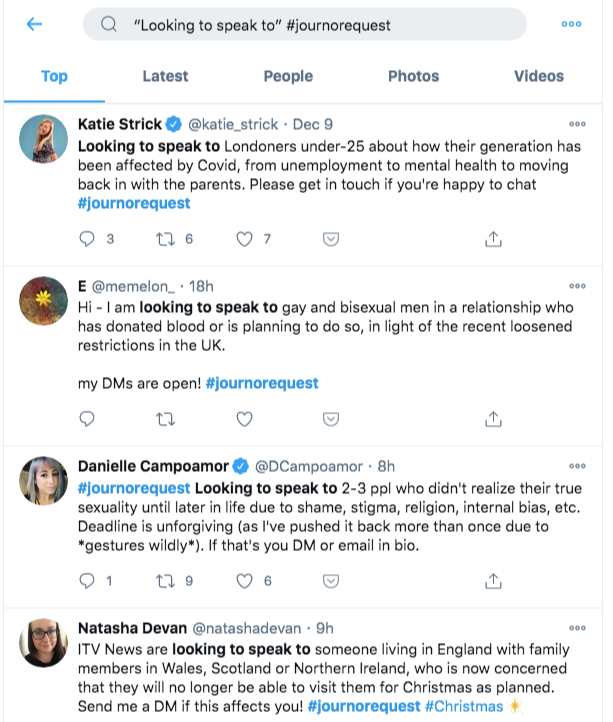

Examples of keywords you can use for Twitter search:
- “Looking to speak to” #journorequest
- “Looking to interview” #journorequest
- “Is there anyone” expert #journorequest
- “Can you recommend” interview #journorequest
If you notice, these are phrases they naturally use when finding people they can interview. Questions like is there anyone or can you recommend?
By using natural questions as part of your keywords, you’ll get more searches when finding journalists to cover your story.
7 Content Promotion Strategies (That Actually Work)
When it comes to content promotion, the first to get started is not knowing what channels to promote your content in, but rather having an understanding of your content piece.
Before you promote your content, you have to know what makes your content valuable.
The question you need to ask yourself is, “what makes your content valuable?”
Because if you see the value of your content, you can easily write captions for social media posting, you can easily write email templates to promote it to a cold audience, and even easily target the right audience -- because in the first place, you’ve identified what value your content offers.
Find that value proposition.
Table of Contents
Now, here are 7 effective content promotion strategies that actually work.
Audience Banking
First is through audience banking.
That is reaching out to your existing audience - this could be on social platforms or to your email list - if you have one.
You may have an existing following on social media services like Facebook, Linkedin, Twitter.
Start promoting your newly published content to your social followers.
The key here is to promote your content based on the context of the platform.
You don’t copy and paste the same stuff you post on one platform to another platform. On Twitter, you’re likely to see preview-like captions to describe what the content is about in a gist.
On Facebook, long-form caption writing may work best for you. As people tend to read more long-form captions today on that platform.
Know the context of the platform, and think of how you can best serve your audience with your content promotion strategy.
Community Engagement
Second is community engagement.
Community engagement means you don’t go to a Facebook group and quickly post a link to your content.
Remember that community groups are more strict today than before. They have guidelines for posting to follow.
So it is best to have a few groups where you can engage with other audiences.
Find community groups where your audience hangs out.
On Facebook, you can quickly search for which group you can engage in. Same with Linkedin.
There are particular premium slack groups where you’ll get the most value from audience insights.
The key to promoting your content in all of these groups is to think of value giving than just value getting.
If there are questions that are relevant to what you’re doing, answer it with value. And if there is a resource that you think might be helpful for the audience, include a link to your content.
External Content Contribution
The third effective content promotion method is external content contribution.
What you’ll do here is create content for other websites to promote your content on your blog.
How is that possible?
When you write content for other blogs, you include a backlink to your content on your blog.
This is often referred to as “guest blogging”.
When writing guest posts, be sure to consider these 5 simple tips:
- Who is their audience? Who are the people they’re writing for?
- What topics will best serve their audience?
- Can I write about those topics?
These three questions can guide you towards creating external content for other websites to promote your content that’s in your blog.
Alliance Building
Another content promotion strategy that really works is alliance building.
Alliance building means that you know who are your networks going online.
If you’re marketing an eCommerce site, who are your partner retailers, manufacturers, or suppliers you could reach out to promote your content?
Here’s the thing: it’s easy to promote content to a person who knows and trusts you.
So why not start with people you’ve known for months and years, and send them an email, telling them of your latest guide, infographic, or resource.
Start by having an inventory of your friends and networks working in the same industry as yours.
You can create a spreadsheet to track these people. Find their email addresses. Send them outreach emails. This leads us to the 5th content promotion strategy.
Cold outreach
If you don’t have an audience yet, this is the content promotion method for you.
If people don’t know you, then let them know you exist and your content exists.
So start looking for people who might be interested to link or share your content.
One good strategy here is to know publishers who’ve created similar content and see who has shared or linked to their content.
So if I am writing a piece about a sleeping guide for kids. I want to know who are other publishers created a sleeping guide for kids.
So I go on Google and type in, “sleep guide for kids”.
Here, I see different pages for that same topic.
Then if I want to know who are the people who linked to those pages, I can use a tool like Ahrefs to find who linked to those pages.
Given if they linked to a page similar to my content, they’d be more likely interested to see, share, or link to my content as well.
Dream 100 Promotion
Have you ever wondered how others get more attention quickly even if they’re just starting out?
The reason is that they associate themselves with influencers and thought-leaders in the industry.


These influencers and thought-leaders are your dream 100. They are the top 100 personalities in your industry.
If you leverage other people’s influence, you attract more eyeballs and get more massive attention than what a usual marketer can get.
But one question that will arise is this:
How could they interact with thought-leaders and top industry practitioners if they’re not of the same level?
You don’t send them spam messages to do a favor for you without even providing them with value first.
Here are some examples of the value you can give to your dream 100:
- Free product/service (e.g. 6-month access to a SaAs premium tool plan)
- Interviews (e.g. guest on your show featuring industry experts)
- Free content format (e.g. infographic version of their top blog post)
Start promoting your content pieces to Dream100 by giving them initial value.
Ad Retargeting
The next effective content promotion strategy is ad retargeting.
Basically, Ad retargeting is creating ads to target people who’ve visited your website.
Because they’ve known about your brand or content, the cost of your ads would be much lower than if you target a cold audience.
Ad retargeting is hitting warm audiences, which is an effective strategy to constantly build up your audience by showing your ads to people who are familiar with your website.
Start setting up your Facebook pixel. There are many tutorials on Google that show you how to do that. Then start creating ads to retarget website visitors.
